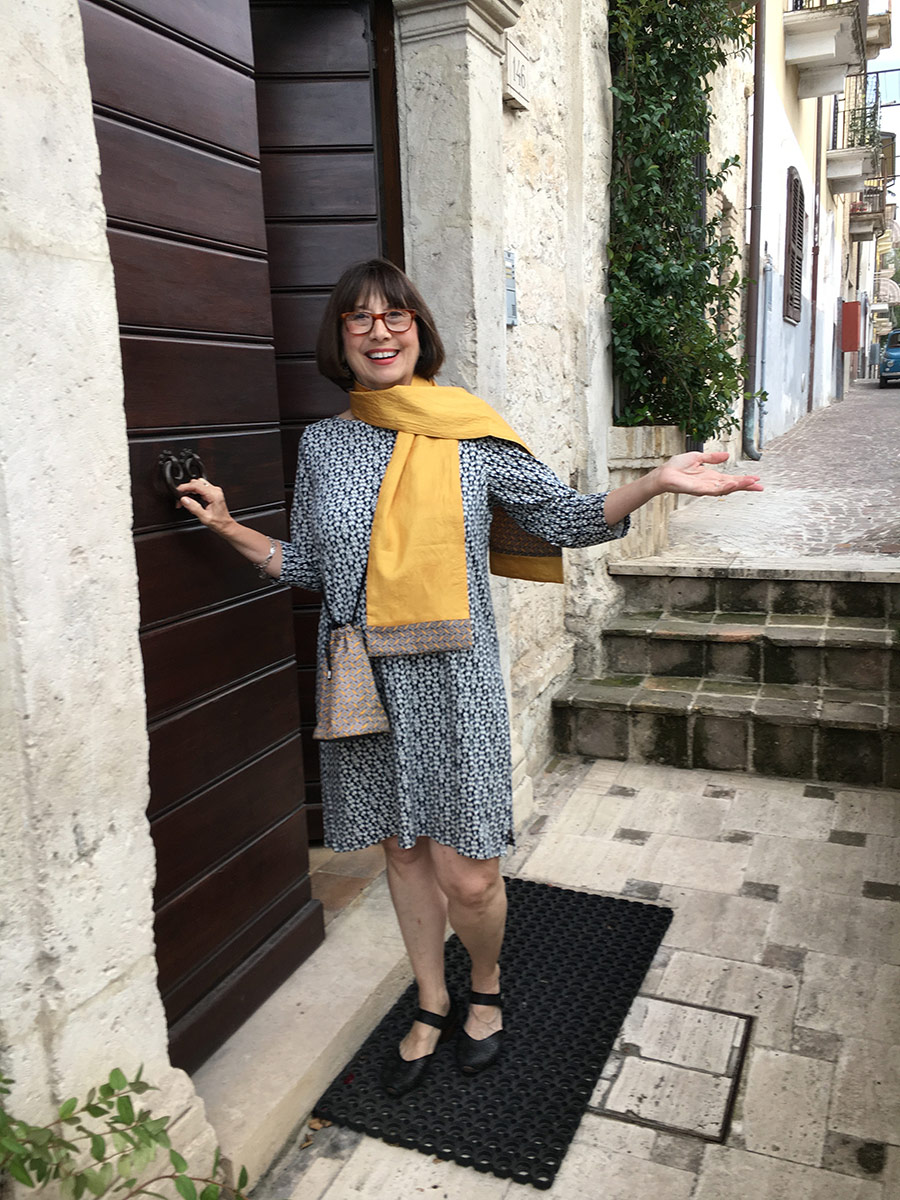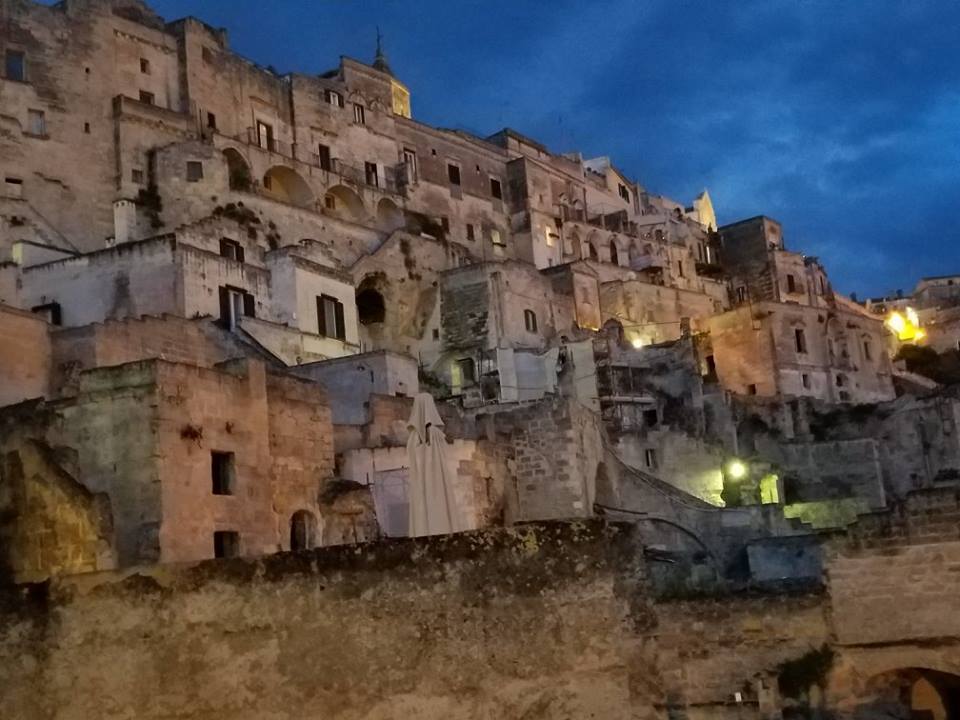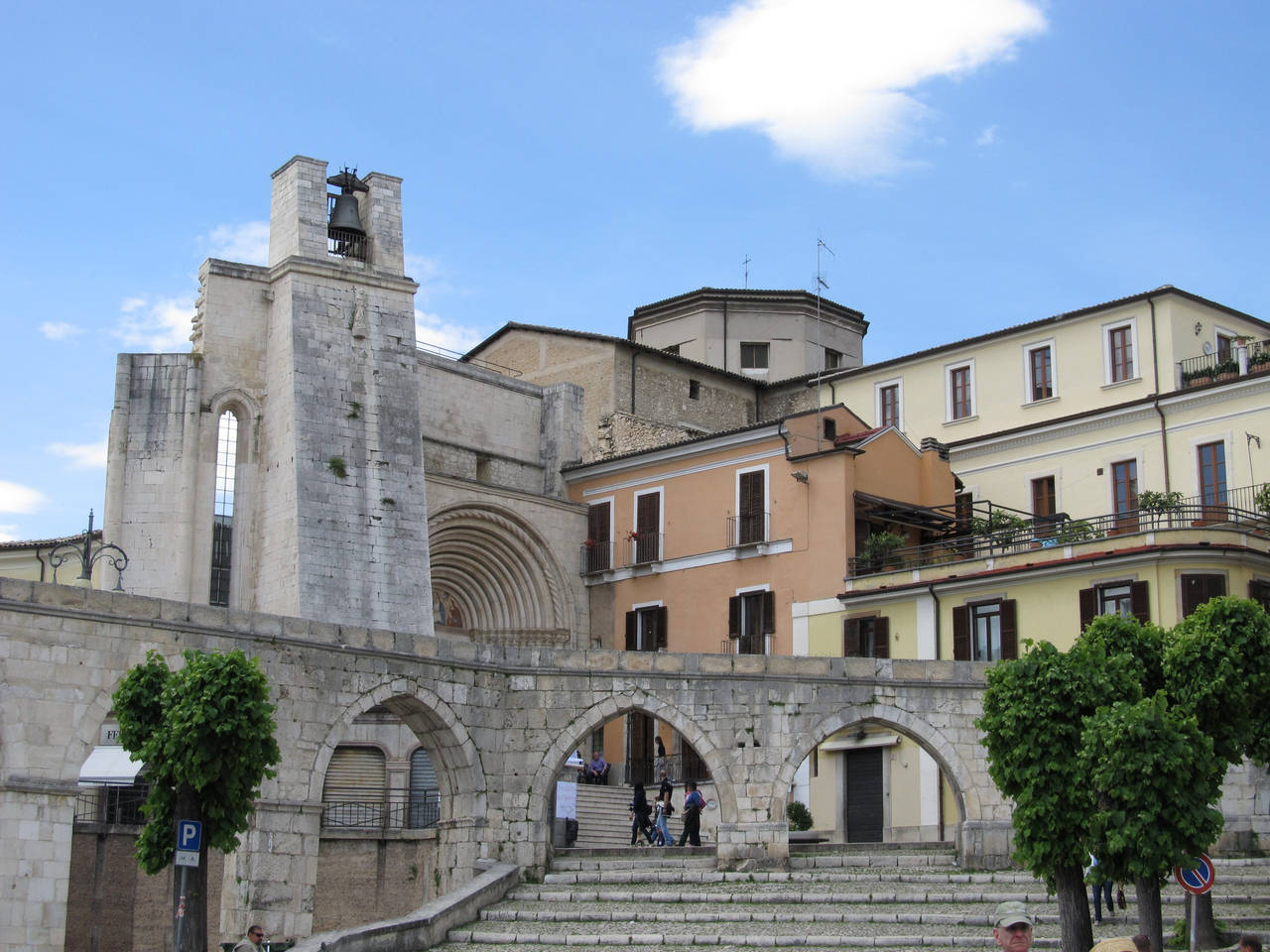Always roaming with a hungry heart. — Alfred Lord Tennyson
When we travel, we usually “roam” for a time. Go off the itinerary. Lose the schedule. I’ve filled journals with stories about all the turn-offs and re-routing that Tim has done on vacations — some of it hair-raising, but most of it well worth the time (his) and tantrums (mine).
After a pretty rigidly scheduled week in Lombardia, we went off with another couple to do some exploring in Milan and its environs. We took our time getting there, driving past Lake Garda, delighting in the fields and small towns we encountered along the way. The only thing really “planned” about the next three days was that we knew where we would stay and we knew that we wanted to visit with some friends of ours who lived there. And we’d go to Lake Como and Bellagio if we could swing it.
A major disappointment for us earlier in the week had been going to Ferrara. Mind you, I absolutely love Ferrara — we arrived a few years ago just in time for the Palio — but this time we were there during Rosh Hashana and I had eagerly scoped out a few things that would be meaningful for our Jewish friend, Jerry, who was in Italy for the very first time. Little did I know that the Museo Ebraico, in the heart of the medieval center, would close the minute we got there. The entire street (Via Mazzini) had been part of the ghetto, where Jews were separated from the rest of Ferrara from 1627 to 1859. We were all looking forward to seeing and learning, and there was much disappointment. But I made a quick recovery, if I do say so myself, leading us all over to the Osteria del Ghetto for lunch.
The Osteria, located in the heart of the ancient Hebraic Ghetto, opened in 2002 and offers a delightful respite for weary and hungry wanderers. The chef’s specialty is the pumpkin-stuffed pasta of the region as well as a wide variety of meats (beef, horse and pork . . . lamb, wild bear, deer, duck and pheasant). Another favorite feature? Dogs are welcome (but not on the menu), as long as they don’t disturb the other guests. Now that’s a civilized society!
 Anyway, this story is about Milano, not Ferrara, so let’s fast-forward a few days to our storied destination. After getting separated, after seeing all those sexy Ferraris, after doing some quick shopping in the Galleria Vittorio Emanuele II, we had worked up an appetite. But cruising through the “mall” (what an inadequate word for what the Galleria has to offer!) we decided that we would not welcome paying 30 euros each for what amounted to a sandwich and a soft drink in one of the fancy caffes. So we walked on.
Anyway, this story is about Milano, not Ferrara, so let’s fast-forward a few days to our storied destination. After getting separated, after seeing all those sexy Ferraris, after doing some quick shopping in the Galleria Vittorio Emanuele II, we had worked up an appetite. But cruising through the “mall” (what an inadequate word for what the Galleria has to offer!) we decided that we would not welcome paying 30 euros each for what amounted to a sandwich and a soft drink in one of the fancy caffes. So we walked on.
This is what happens to us in Italy. We never get what we go for. We get better. I don’t know what made us look up, but before long, we saw it. Something gold on a second-story window. It was a menorah. Above all the fancy-schmancy restaurants and the unaffordable shops . . . above the world’s most elegant McDonalds . . . above the hustle and bustle of the crowds, was a simple gold menorah on a window on the second floor.
We tried to find an entrance, a way up. Tim’s hound-dog sense kicked into gear and he walked quickly in and out of shops and caffes to find a door. Jerry followed. There was no obvious entrance. The three of us were about to admit defeat, when Tim flew past us, rounded a corner and left the Galleria. He was hot on the trail . . . and then Jerry was right after him.
I have learned that skepticism is not a useful emotion in these situations, so I just stand back and wait. And watch. And have my camera ready. A few minutes later, they yelled, “This way!” and we followed. They had found a sign in an alley that looked like it led absolutely nowhere. The sign read “Beth Shlomo.” We found the door and walked up.
We followed the signs to a door and knocked. It was a working temple and there was a Rosh Hashana service going on. The last one of the holiday. After showing our identification and explaining that we were tourists from America looking for a service, we were welcomed warmly. Tim and Jerry took their places among the crowd of men in the main room; my friend Sharon and I stayed in an adjacent room with the other women and the children.
We had not realized the significance of the journey here until we started reading the signs and posters. Beth Shlomo is an Orthodox Jewish Congregation and the most central synagogue in all of Milan. It is a lively, multi-lingual community that operates mostly in the Ashkenazic Sefarad tradition. And herein lies a tale.
In 1940 when Italy entered WWII and the anti-Semitic “racial laws” were enacted in Italy, the Fascist government rounded up all Jewish refugees not holding an Italian passport and interred them in the south, at a camp called Ferramonti. Most of these refugees were of Ashkenzic descent who came to Italy fleeing other countries as they fell to the Nazis. While conditions in the camp were not ideal, the authorities did permit the prisoners to build a synagogue.
The Allies stormed the south in 1943 and pushed the Germans back north of Naples, sparing the Jewish refugees a terrible fate. And the Allies’ famed “Jewish Brigade” transformed the synagogue into a military chapel for Jewish soldiers. In 1945, at the end of the war, the Jewish Brigade was transferred to Milan, where the members worked to help Holocaust survivors who were en route to a new Jewish state. During this period, thousands of refugees were brought to Milan and two rooms of the original building were set aside as a “house of study” (Beit haMidrash), with many of the holy books and artifacts used in the Ferramonti temple finding their way there. The heritage of the Ferramonti experience is still very much alive in the relocated Beth Shlomo, from the benches, on which are still visible the old Fascist labels, to the warm welcome bestowed upon guests.
Have you ever been within 20 feet of the shofar (ram’s horn) when it is blown? Let me tell you, you pay attention. There was attention and there were tears, and I’m a non-Jewish newbie at this. It is commanded that the shofar be sounded on Rosh Hashana to remind the people that God is King. And on Rosh Hashana (unless it falls on Shabbat) the horn is blown for 100 notes each day. A lot of reminding, and a lot of skin-tingling. I’m so glad Tim follows his nose.
After we said our good-byes, declining the kind invitation to stay for lunch (we thought we’d overstayed our welcome already), we went out into the afternoon sunlight new people, a little dazed and still in search of a good lunch experience. We found it only a few yards away at Primafila on via Ugo Foscolo. Our waiter, David, could not have been more gracious. The restaurant itself was beautiful and its owner must be something of a music afficionado because there were these fantastic photos all around the rooms of jazz, classical and opera stars and composers. And conductors. Tim snapped a picture of one with his cell phone that is honestly one of the more breathtaking photos I’ve ever seen.
That day I had the Zuppa di Verdura (vegetable soup) and the Businessman’s Lunch (the vegetarian option) and it was fresh and colorful and simple and so tasty with its grilled veggies over a tagliatelle in a subtle pink sauce . . . the best of what makes Italian cuisine so special.
We exchanged e-mail addresses with a family seated behind us and promised to send them some photos that Tim took of the mama and her children. It was a good day. No, it was a great day. What started out as a snarky “why-weren’t-you-where-you-said-you’d-be?” day turned into a spiritual and culinary masterpiece. Such is a day in Italy. Lost and found.
Buon viaggio!

Linda Dini Jenkins is a card-carrying Italophile, travel planner, freelance writer, and amateur photographer. Travel is her passion, so writing about her travels just comes naturally. She hopes all her travelers find a way to express their joys, surprises, and fears as they travel and gives every traveler a nifty journal to help smooth the way. Learn more…


